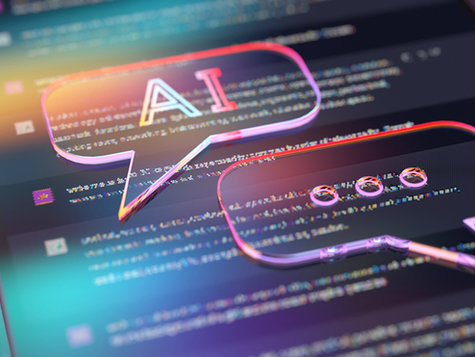How voice-first artificial intelligence is reducing burnout and improving efficiency for emergency response teams
Fires, floods, major accidents, crime, and even pandemics. There are no short of disasters that our emergency response teams face on a day to day. While the pressures on emergency workers are increasingly high, budgets are becoming more and more restricted. This is creating an environment where our most essential workers are experiencing burnout.
Luckily, voice AI has emerged as a beacon of hope for an otherwise tired and overwhelmed emergency response sector.
While AI has been used in emergency services for some time, the tools have been limited, and its capacity to support those on the ground hasn’t been enough.
However, new systems like Ask Harry have elevated the AI game.
With an understanding of human behaviour, and an ability to tackle complex issues, voice AI offers to relieve the pressure and workload from exhausted responders.
In this article we’ll explore how voice artificial intelligence can:
- Reduce burnout
- Provide enhanced situational awareness
- Optimise resource allocation
Voice AI applications in emergency situations
Voice AI is more than just innovation, it’s a collective transition into a safer, smarter, more efficient way of operating across almost every industry. While big business relies on this shift to boost productivity and improve the bottom line, the focus of emergency services remains singular: save more lives while protecting emergency workers.
Voice AI emergency response technology promises to deliver exactly that.
In emergency situations, every second counts. Voice AI systems like Ask Harry cut down time-heavy tasks such as reporting or logging incidents to just a few seconds by harnessing the power of human conversation.
Workers can verbally instruct their AI system to complete tasks such as:
- Real time reporting / incident logging (Voice AI is 5 x times faster than keyword reporting).
- Connecting and communicating with every team member – no matter the location.
- Accessing data-driven insights and analytics.
The utilisation of voice ultimately provides a safer mode of operating. It reduces the distraction that comes from time-consuming tasks such as logging and reporting, and enables workers to focus on what’s in front of them. This is essential in high risk environments such as accidents, fires and incident investigation.
360 degree situational awareness
Voice AI facilitates a higher level of communication between emergency response teams. Its integration into the central communication system allows information to be rapidly shared across multiple platforms. This ensures emergency workers remain clearly briefed and up to date on unfolding situations.
Contact Harald Chief Technology Officer, Barton Ip says voice AI provides safer outcomes for everyone involved.
“Voice AI systems like Ask Harry give workers the opportunity to pivot and adjust in real time. As we know, emergency situations can change rapidly, so this instant access to updated and reliable info is invaluable and can ultimately save lives,” he said.

Reducing burnout
Firefighters, paramedics and police officers are highly skilled and trained in the business of protecting communities and saving lives in all types of emergencies. But, long hours, dangerous, high pressure work environments and a need to make every second count can lead emergency workers to exhaustion and overwhelm.
Voice AI systems like Ask Harry work autonomously 24/7 to monitor workplace activities and the environment. Anomalies, unsafe conditions, or deviations from safety protocols are quickly and automatically detected, keeping emergency operations one step ahead of risk at all times.
“Ask Harry is so much more than just a workplace assistant. It can streamline processes, capture critical data and provide analysis. For workers in high risk environments it provides a much-needed safety net that not only protects them, but ultimately enables them to protect others to a higher level than ever before,” Barton said.
Resource optimisation
In an emergency, the allocation of necessary resources needs to be done swiftly and with all possible scenarios considered and covered. Given that every second counts in an emergency situation, this type of analysis and decision making can chew up valuable time.
Voice AI’s complex processing of data and analytics enables the most optimal actions to be selected. With just a few words, the system will compare multiple scenarios based on historical events and data to deliver the appropriate response. From dispatch to distribution of supplies on the ground, voice AI ensures resources go exactly where they’re needed, exactly when they’re needed.
The future of emergency services
While emergency services will always be led by the courage and leadership of emergency workers, voice AI is here to enhance the safety, readiness and response of those on the frontline and their capacity to protect others.
But, this shift will require forward thinking leaders to merge the power and potential of AI with the heroism of our emergency workers. The result: a future where people, places and property are safer and more supported.




